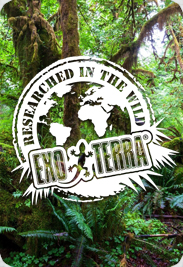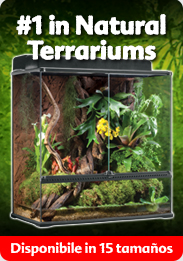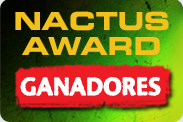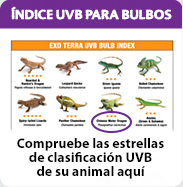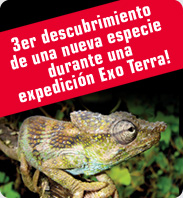Expedición 2009 - Honduras / El diario
The Maya Expedition
After we arrived late at night in the city of San Pedro Sula located north of Honduras we continued on to Copan the following morning. Copan is situated in the Northern Triangle Honduras-Guatemala-San Salvador and it’s pretty dangerous to visit this region. Assaults targeted at foreigners are not uncommon. En route we stopped briefly at a small street restaurant. It was there where we had the chance to take a snapshot of our first reptile, a young Ameiva undulata. These are widely spread across Central America and reach a length of approx. 25 cm.
During breakfast the next morning we made plans for the day. We decided to take a walk to a nearby waterfall. We enquired about the safety of the area and were immediately provided with six armed soldiers for our protection.
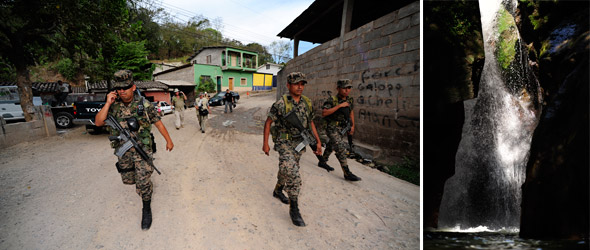
It was an extremely interesting but exhausting excursion. The soldiers were really helpful and so we were able to take a few interesting snapshots with them. At 35°C it was dry and hot. The scenery was stunningly beautiful and the waterfall allowed us to cool-off which was so refreshing.
Roland caught two different types of life bearing fish with his landing net in the stream of the waterfall as well as a large type of shrimp.
The first type was a swordtail of the genus Xiphophorus; the second type of fish was a life bearing Heterandria species and a large shrimp of the genus Macrobranchium. We were also able to spot a young striped basilisk called a Basiliscus vittatus on a tree trunk. These are very wide spread across all of Central America. The first frog we found was a larger tree frog of the genus Smilisca. We also came across a lot of small Anolis sagrei lizards. Frogs of the genus Leptodactylus were sitting all over the water.
The highlight was definitely finding a small Leptodeira annulata, which is a genus of the colubrid snake. This colubrid snake reaches just over a meter in length and mainly feeds on frogs.
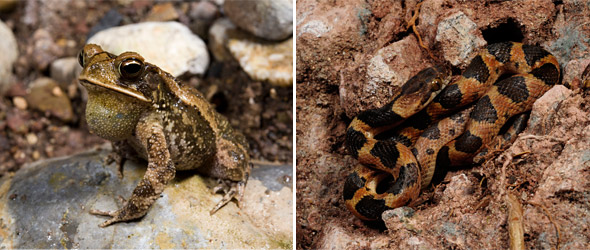
We were also able to detect a Kinosternum leucostonum, which is a white-lipped mud turtle. This is a relatively small type of water turtle with a carapax length of approx. 18 cm.
Another refreshing dip in the waterfall made the walk back to our accommodation more bearable. The way back took us across a stream where the landscape appeared to be quite dry. I would imagine this would look completely different during the raining season.
After all that hard work we earned ourselves a small refreshment. The following morning we tackled the next leg of our expedition. We took a minibus towards La Ceiba to get to the Pico Bonito National Park from there. After a drive in the pouring rain that took over ten hours we were completely exhausted and were glad to hit the pillows. After breakfast we left for the rainforest. Its name certainly did itself justice as the heavens open up in short intervals. It was way too cold and wet, apparently even for the amphibians.

After crossing a suspension bridge we reached the National Park. Small streams, cascades and waterfalls featured all over the National Park. Small caves are always interesting. Quite often they are the homes of some fascinating animals. Despite Paul’s physical efforts, he was unable to spot any wildlife.
But with a little patience and perseverance you can always find something such as this small forest scorpion. Millipedes are fascinating arthropods. They mainly feed on decomposed leaves or wood. Even frugivores (fruit eaters) have plenty of menu choices in the rainforest.
Pico Bonito National Park is without a doubt one of the most diverse National Parks in Honduras and with heights up to 2,378 meters above sea level it is also an area with the most enormous differences in altitude in the whole country. Named after the mountain south of La Ceiba, the National Park was created and is without a doubt one of the reasons why La Ceiba has become a popular Eco-Tourism destination. Although access to the park is limited, it is still possible to visit some of the more hidden areas.
Generally, where there is a lot of water, you will find frogs. And that’s exactly what we uncovered – thousands of tadpoles that decided to stay in the calmer part of the stream. The water temperature was not exactly inviting at approx. 19°C.
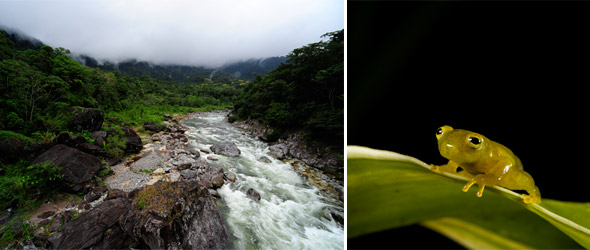
Norops tropidonotus is a small brown Forest Anolis and is very common in this region. The large stripe basilisks, here a mature male, love sunny spots at the outskirts of the forest.
After the rest of the day remained cool, wet and humid, we were rewarded with beautiful sunshine on our day of departure. The Aracari, a small type of Toucan is tricky to photograph as they are very timid. These slightly larger Keel-Billed Toucans are easier to capture on camera.
In the mornings around 8 AM the air temperature was at approx. 18°C. It took about 1 hour in a small plane to get from La Ceiba to the Caribbean Coast of La Moskitia, our next stopover. A minibus took us to the nearby village of Brus Laguna.
A small refreshment and a snack containing local beans, which are part of every dish, gave us strength for our next adventure. After a short break we stowed our equipment on a boat and took off. We had to get to the other side of a large lagoon. After about half an hours drive we realized that the engine was too weak for the crossing. We berthed somewhere and someone went on foot on the hunt for a new and stronger engine. This exercise ended up taking one hour that we spent on the boat in the blazing sun. After we replaced the engine we speeded across the lagoon into a man-made river, which ran straight through the middle of marsh. After roughly half an hours drive smoke was coming out of the engine and it died. We had to stop in the middle of the marsh surrounded by thousands of mosquitos. Our guide had no choice other then head to the next village on foot and borrow a horse so he could ride to the nearest bigger town. Here, he organized a large, motorized log boat made from wood and arrived back shortly before dark.
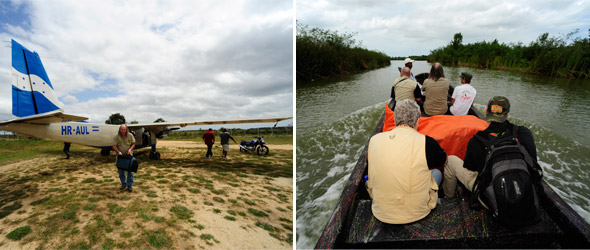
We just made it to the Raista village before complete darkness set in. Here we were greeted by very ordinary accommodation. After a tasty dinner (of course including the native beans), we explored the neighborhood but apart from many leaf-cutter ants we only came across Hemidactylus frenatus, a type of gecko.
Raista is a small, dreamy village situated at the edge of the lagoon with hospitable people and not much else. The number of orchids and tillandsias in the trees were striking.
We had breakfast around 7 AM (wonder what we had??), of course none other than pureed beans. Then we took a wobbly log boat all in a row without much room to move to reach our destination, Garifuna village Las Marias, situated approx. 80 kms upstream of the Rio Platano. First we floated along riverbanks covered by mangroves passed settlements until we finally arrived at the river. We are mesmerized by a large colony of birds busy building weaverbird like nests.
We continued upstream with our wooden canoes. We appeared to have scared off a crocodile (Crocodylus acutus) as he glided from the riverbanks back into the water.
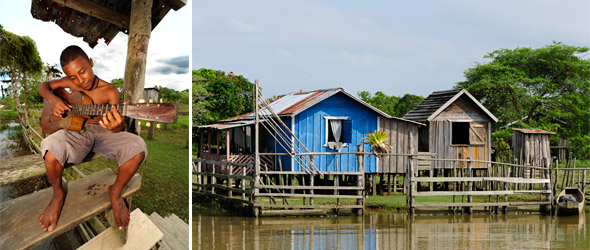
During our river trip we had to disembark on a number of occasions to drag our boat over the sand bank. Branches and tree logs floating below the water surface made it hard to ride our boats. After an 8 hour boat trip we finally reached our destination – Las Marias. After this exhausting trip we were welcomed with a hearty meal. Here we remained for the next 4 days.
Las Marias village only consist of a few huts, a church and a school. Las Marias lies in the heart of the Río Plátano Biosphere Reserve and many unexplored archaeological sites also exist in addition to incomparable fauna and flora in the tropical rainforest. As expected we spotted far less animals as we would have done during the raining season due to the dry period existing at the moment during our expedition.
We almost did not see this well camouflaged butterfly among the leaves. On the other hand, different types of butterflies and their caterpillars were far more distinct.
Our first encounter with green Iguanas living in the wild was quite something. These herbivorous reptiles reaching a length of over two meters are a delicacy among the locals and are apparently very tasty. That is why they are actually quite shy and are usually very hard to capture on film or camera. Admittedly we were lucky as our exclusive telephoto lenses enabled us to catch some amazing snap shots. But even small creatures such as this whip spider make interesting objects of observation. This small Anolis refuses to be disturbed by us and carries on hunting for food.
Suddenly we stumble on a just one meter long snake, a Drymobius margaritiferus. This type of snake is wide spread across Central America. These also generally feed on frogs and small lizards. It made no attempts whatsoever to bite us when we tried to catch it. We could not get over the large and small bromeliads on the trees.
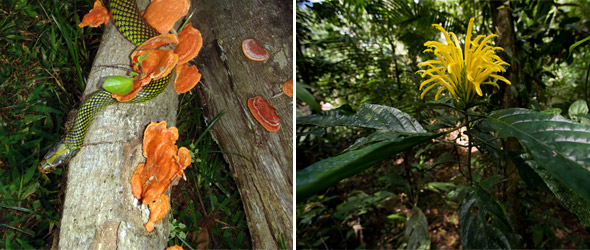
We can hardly spot the striking red eyed tree frogs, the Agalychnis callidryas in the dense vegetation of the rainforest. They are nocturnal and only show their stunning red eyes and blue flanks if they are woken up. Of course we need to regain our strength with some beans after such a long walking-tour.
The next day we plan to cross the Rio Platano to explore the other side of the rainforest. When sitting in these wobbly log boats, you constantly feel like they will capsize at any moment. That makes us a little nervous in terms of our expensive camera equipment. Obviously we did not capsize and reached the other side of the bank quickly. From here we had a beautiful view of Las Marias.
We almost overlooked a young crocodile on the sludgy riverbank. Clearly it felt threatened by us and slowly moves away under protest.
During the long, exhausting hike through the rainforest far away, bright red Aras and small parrots flew above us. The Aras were particularly stunning and a sight that will stay in our memories for a long time. For several kilometers our route takes us uphill and downhill through fields and forest. The heat was almost unbearable and our water supply quickly evaporated.
But the slog was quickly forgotten when we came across a snake, an Oxybelis aeneus hiding in the shrubs. This snake living in the trees can reach a length of nearly two meters but at the same time is very slender and also feeds on frogs and lizards. If it feels threatened its mouth rips wide open and it shows its black mouth mucosa. This is a so-called opistoglyph and has tiny poison fangs in the back area of its mouth. This poison is relatively harmless to humans. However, you still need to be careful.
There are small frogs of the genus Craugastor everywhere in this region. Or those from the genus Hyla. The large Eleuterodactylus species can also be found here. Hyalinobatrachium is virtually transparent.
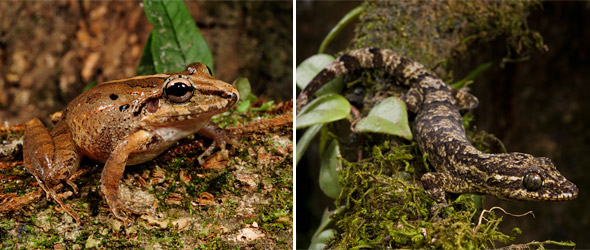
A highlight for Gecko enthusiasts is the Sphaerodactylus millepunctatus. They live on the ground and only reach a length of approx. 6 cm. They inhabit the layers of the leaves in the woods.
Leaf-cutter ants are building massive work colonies and transport circular cut leaves to their underground tunnels. It’s hard to believe that these tiny ants have the ability to carry several times more weight than their own bodyweight. Green Iguanas are always popular photo objects.
Our tasks and objectives of our expedition unsurprisingly also include UV, temperature and humidity readings. Whilst inspecting a fallen over tree log, Roland stumbles across a small scorpion.
The largest Gecko in Central America is the Thecadactylus rapicauda. It reaches a length of around 20 cm and has very sensitive skin that slightly tears when touching it.
Oxybelis brevirostris is a slender snake also feeding on frogs and lizards. This snake remains one of the smaller ones with a total length of approx. 120 cm. Anolis lemurinus is widespread in this area.
A young animal of the Ameiva festiva species really stands out with its light blue coloured tail. Sadly this young‘s colouring disappears, as they get older. The red coloured bromeliads are real eye catchers. The Lemur-Anolis feels disturbed by our presence.
The colours of the Cnemidophorus lemniscatus are gorgeous and make it one of the most flamboyant lizards native to Honduras. It reaches a length of around 25 cm and inhabits the outskirts of woods and riverbanks.
In the middle of the rainforest we came across an almost finished log boat that had been chopped out of a tree. “All“ that is left to do is drag it many kilometers through the woods down to the river. This requires the help of the entire village.

From an outlook on a hill we have the most amazing view over the countryside. In the late afternoon we return to the river to board our log boat that takes us back to the other side. The smooth water around the riverbanks is black due to the millions of tadpoles of the genus Aga-Toad Rhinella marinus.
Paul injured himself and had to stay behind in the Camp. The rest of the team is off on a night excursion to the other side of the river. Generally a lot more wildlife can be spotted during the night compared to the daytime. The green Iguana is clearly not impressed to have his sleep interrupted by us.
The blunthead tree snake Imantodes cenchoa is a night hunter and mainly feeds on frogs. Sleeping Anolis stand out in the flashlight ray due to their light colouring. The large toads of the genus Rhinella marinus are also night hunters. Obviously it is much easier to take snapshots of sleeping animals.
The variety of insects is astonishing. The time has nearly come to head back to camp as the camera batteries have run out.
The last morning in Las Marias has arrived. Guy is proudly having some last minute pictures taken with the ladies of the village and a Boa constrictor. It’s time for our return trip that will take approx. 7 hours and takes us across the Rio Platano.
Because our trip takes us downstream it will not take as long as the journey there. But we constantly have to pass many obstacles such as large tree logs, branches and rapids, which can be risky.
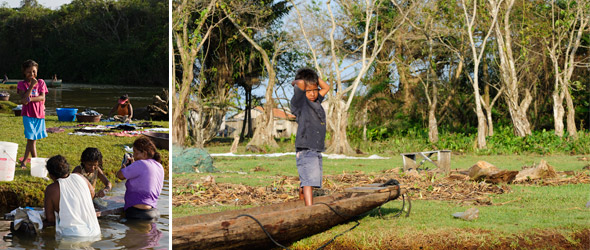
We are able to pass friendly folk having a bath or doing their laundry at relatively high speeds but are forever slowed down by wood floating below the water surface. At one stage we even rammed into a tree log and almost capsized. Crocodilus acutus behaves very timid.
After a lengthy trip we get closer to the lagoon. Continuing through the mangroves we finally reached the lagoon. Unfortunately a storm is brewing and our next stopover destination is delayed by 2 days.
At last we moved on. Despite the bad stormy weather, our plane touched down on the runway of Brus Laguna. First we flew to La Ceiba and from there to the Caribbean island of Roatan, which is part of Honduras. Here the most amazing beach of the Caribbean Ocean was waiting for us.
Obviously the stunning green Anolis allisoni caught our eye right away. In fact, they were everywhere. They reach a length of approx. 20 cm and males stand out due to their blue colouring on their head. Ants inhabit these hollow thorns and their bites sting badly.
After a short time of exploring around our accommodation we stumbled on a baboon spider. After we found one we realized they were actually everywhere. Paul manages to catch a hummingbird in flight with his hands. They are truly magnificent small birds.
Willy is totally in his element and lures one baboon spider after another out of their hiding. This female spider is guarding her egg cocoon. Willy carefully opens the cocoon to show us the nearly developed baby spiders. Willy closes up the cocoon again and returns it to the female spider. This little exercise is not harmful to the baby spiders.
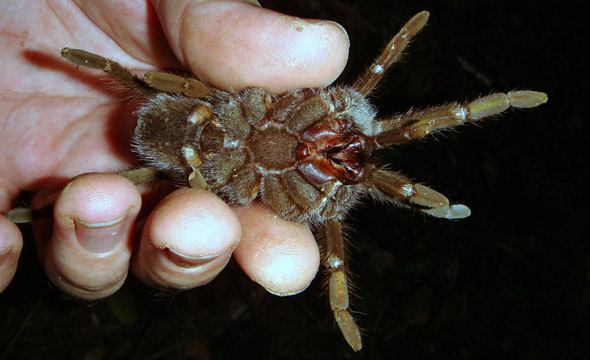
Our camp is situated near the beach and at the same time in the middle of the woods. In addition to numerous spiders, loads of small geckos of the genus Sphaerodactylus, that is to say Sphaerodactylus rosaurae inhabit the same eco-top. Here is a young animal showing its youth colouring.
A small stream attracts Roland’s attention. The landing net is quickly unpacked. However, it takes him a while before catching a few small lifebearing fish of the genus Poecilia. All we can see at the beginning of our night excursion is a huge butterfly with luminous eyes. Termites and leaf-cutter ants are also inhibiting this huge tree. In the ray of the flashlight we discover a male striped basilisk. We manage to catch it so we can take some detailed snapshots. The leaves are covered with sleeping small Anolis. Clay-brown frogs are sitting in small puddles but we can’t determine their species right away.
We are interrupting a sleeping Anolis roatanensis. It’s always a lot of fun to film these beautiful Anolis allisoni. This is what an Anolis roatanensis looks like during the day. The water snake Goniophanes bipunctatus reaches a length of up to 90 cm and mainly feeds on frogs. The small skink Gymnophthalmus speciosus that only reaches a length of approx. 8 cm also lives between the leaves in the woods.

We proceed with the obligatory measurements. Paul sneaks up to a striped basilisk. We take the boat along the coast to find a suitable spot for finding black Iguanas. After searching for ages we first stumbled across a young Iguana of the genus Ctenosaura oedirinha that still has its green colouring. Here a female in a hollow tree log.
In the lava rocks on the riverbanks we finally come across an adult male. Ctnosaura oedirinha reaches an approximate length of 70 cm and can only be found on the Islas de Bahia. These animals are extremely shy and due to their colouring are difficult to spot. Young ones feed on insects whereas adult animals mainly feed on herbivores.
After 2 weeks of living on beans, we well and truly earned a big steak on the second last night. We are aware that we will be back in the city of San Pedro Sula the next night and thus, truly enjoy our last night on Roatan.


